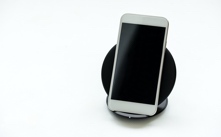 Given how much we use smart phones these days, it’s no wonder that wireless chargers are a highly sought after piece of technology. With the ease of just laying your phone onto a wireless charging pad and not having to faff around with plugging cables in and out of your phone, it couldn’t be easier. Be sure to check that your smart phone is indeed capable of being charged wirelessly before you make your purchase though and also have a gander through our buying guide for some top tips on what you should be on the lookout for.
Given how much we use smart phones these days, it’s no wonder that wireless chargers are a highly sought after piece of technology. With the ease of just laying your phone onto a wireless charging pad and not having to faff around with plugging cables in and out of your phone, it couldn’t be easier. Be sure to check that your smart phone is indeed capable of being charged wirelessly before you make your purchase though and also have a gander through our buying guide for some top tips on what you should be on the lookout for.
See Also: Portable Chargers | Smart Phones
Shops With Wireless Charger Offers
Wireless Charger Buying Guide
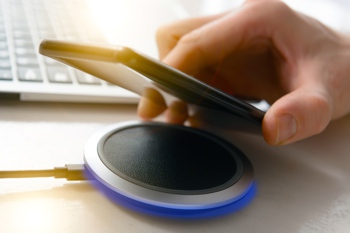 So, you have just got yourself a new phone, and not just any phone, but one of the flagship phones from the top brands. It comes with a plethora of cool features, including a clever piece of technology that allows you to charge it wirelessly. That’s right, using physics, something to do with magnets, and possibly a little bit of voodoo, the latest phones can now recharge their batteries simply by being placed on something that resembles a coaster, with no wires required.
So, you have just got yourself a new phone, and not just any phone, but one of the flagship phones from the top brands. It comes with a plethora of cool features, including a clever piece of technology that allows you to charge it wirelessly. That’s right, using physics, something to do with magnets, and possibly a little bit of voodoo, the latest phones can now recharge their batteries simply by being placed on something that resembles a coaster, with no wires required.
Actually, that’s not strictly true, since the wireless charger itself still needs a wire to be plugged into mains electricity, but it does mean that you don’t have to faff around with cables or retrieve the one cable that fits your phone from your stroppy teenager’s bedroom every time you need to get some extra juice in your battery. Wireless chargers essentially give the user that little extra convenience.
What Is a Wireless Charger?
There’s no inherent mystery about wireless chargers. As the name implies, they’re chargers that charge…wirelessly. Simply place the phone on the charger, making sure it’s positioned correctly, and it will start to charge.
Whilst it might seem like something out of a sci-fi movie, the concepts that allow us to charge wirelessly are not that new. Wireless chargers charge through electromagnetic induction, and it’s thought that the first attempt to transfer power in this way was back in 1894, though it was quickly forgotten about in favour of the combustion engine. Induction chargers have been common place in the home since the 1990s, as this is how your electric toothbrush is charged. However, it’s developments in the technology in the last decade that have made wireless charging efficient enough to be used for mobile phones.
Benefits of a Wireless Charger
Although wireless charging is generally slower than wired charging, it does have a number of benefits. Most smart phone users are aware of the issue of problematic cable connectors and ports. Due to their small size they are easily broken, and the ports on a phone (where the cable plugs in) can become warped over time through the action of plugging and unplugging the cable. The result is a faulty connection that fails to charge properly. Wireless chargers tend to be quite robust, with no small parts that can snap or become bent.
The other advantage of wireless charging is that they tend to be universal in terms of compatibility. This wasn’t always the case, as, much like the VHS vs Betamax debate, for a brief period manufacturers opted for several different standards. Thankfully, in recent years there has been a wide acceptance of the Qi wireless standard, which means that with a few exceptions, wireless chargers will generally work with any phone that has wireless charging capabilities. Compare this with cables, where there are a few different options, and you can see how much easier this is.
Finally, wireless chargers are considerably more aesthetically pleasing than their wired counterparts. The appearance of wireless chargers are very much at the forefront of the design process, with the intention of creating an object that blends into your home.
Different Types of Wireless Chargers
As mentioned above, for a while there were different wireless charging technologies on the market for smart phones, often leading to confusion amongst consumers. However, in recent years, the QI standard for wireless charging has largely won out, being adopted by smart phone giants Apple and Google. That being said, a rival standard, PMA, is still used by a number of phone manufacturers along with QI. PMA wireless chargers have been rolled out in coffee shops across America, so whilst QI might have the backing of the smart phone giants, the battle isn’t entirely over. For this reason, you need to check carefully when buying your wireless charger to make sure that it is compatible with your phone.
Beyond the technological standards, the differences in wireless chargers are largely design related. Some are flat pads that phones are placed on top of, whilst others act more like a stand, propping up your phone to allow you to easily see the screen. Some chargers are capable of charging two devices simultaneously, such as a mobile phone and a smart watch.
Most wireless chargers currently on the market exist as a small coaster sized pad or a phone dock, but as the technology becomes more popular, manufacturers are looking at other ways to add wireless charging to the home. If you don’t want another item taking up space on the table, then you could opt for a table with a wireless charger built into it instead! Wireless chargers can also be found in table lamps, and some chargers can be integrated into your own existing furniture.
Popular Brands of Wireless Chargers
Like many other smart phone accessories, the market is flooded with wireless chargers and choosing one can be a bit of a minefield. Here we look at some of the more popular brands producing these devices.
Belkin
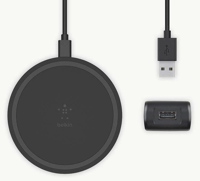 Belkin are a trusted US manufacturer who produce a range of high quality technology, including networking devices and smart phone accessories. Their products are available to buy online, but also in some of the more upmarket high street stores, such as John Lewis. Belkin are one of the market leaders in wireless chargers and they have an impressive range. At the lower end of Belkin’s prices, you have a selection of 5 watt wireless chargers with the choice between a flat pad or a stand that raises your phone up. An AC adaptor is not included in the box, presumably to keep costs as low as possible.
Belkin are a trusted US manufacturer who produce a range of high quality technology, including networking devices and smart phone accessories. Their products are available to buy online, but also in some of the more upmarket high street stores, such as John Lewis. Belkin are one of the market leaders in wireless chargers and they have an impressive range. At the lower end of Belkin’s prices, you have a selection of 5 watt wireless chargers with the choice between a flat pad or a stand that raises your phone up. An AC adaptor is not included in the box, presumably to keep costs as low as possible.
In the middle of Belkin’s range, there is a wide choice of devices with higher outputs up to 10 watts, giving a faster charge time. Again, users have the choice of flat pads or stands, and Belkin have even designed a wireless charger that also acts as a car mount, using the vent in your car to secure your phone to the dash board.
Several of Belkin’s products have been designed to work at maximum efficiency for specific phone manufacturers, such as its Boost Up pad for the Google Pixel 3 which makes use of Google’s technology to provide ultra fast charging for this model. At the higher end of Belkin’s range, you have wireless docking stations that are designed specifically to charge an iPhone and Apple Watch at the same time.
Anker
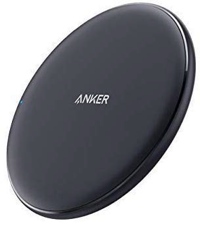 If you type wireless charger into Amazon then one of the top brands you will come across is Anker. Mostly sold online through the shopping giant, Anker is a Chinese company, though it was founded by a former Google software engineer. Its products are popular for two reasons. They are cheap, but they are also reliable.
If you type wireless charger into Amazon then one of the top brands you will come across is Anker. Mostly sold online through the shopping giant, Anker is a Chinese company, though it was founded by a former Google software engineer. Its products are popular for two reasons. They are cheap, but they are also reliable.
Much like Belkin, Anker has an impressive range of wireless chargers that includes flat pads and stands, as well as docking stations for phones and smart watches, and a wireless charging car mount. Again, like Belkin, there’s a choice of power options available with Anker, from 5 watts all the way up to 15 watts for super speedy charging.
Anker devices are considerably cheaper than those offered by Belkin. You could argue that a charger is a charger, and as long as it works safely, why would you pay more? Certainly that is a driving factor behind Anker’s success. However, where Anker is let down is probably in the design, as its chargers perhaps lack the sleekness offered by Belkin.
IKEA
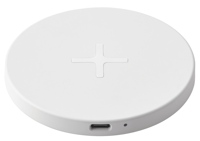 You might be wondering why we have included a Swedish furniture giant on this list, and indeed, IKEA are not normally a brand associated with tech, but they do have a selection of very low cost wireless chargers available. Originally, when IKEA launched these chargers they were to compliment a selection of furniture that could have the chargers embedded into them. IKEA seemed to have ditched this idea, but their chargers are still available to buy in store and online.
You might be wondering why we have included a Swedish furniture giant on this list, and indeed, IKEA are not normally a brand associated with tech, but they do have a selection of very low cost wireless chargers available. Originally, when IKEA launched these chargers they were to compliment a selection of furniture that could have the chargers embedded into them. IKEA seemed to have ditched this idea, but their chargers are still available to buy in store and online.
So, why buy a charger from IKEA? Well price certainly has to the key selling point here, with what are quite possibly the lowest cost wireless chargers on the market. However, they are only capable of an output of 5W, so you won’t get super fast charging. On the other hand, the NORDMÄRKE wireless charger has a cork surround and is designed to be embedded into furniture via the use of a special saw and drill also sold by IKEA. So whilst IKEA may have abandoned it’s pre-embedded chargers for now, it does give consumers the option to adapt their own furniture with this range. In addition, IKEA also have a couple of desk lamps with built in wireless chargers in the base, meaning that there is one less plug socket needed for your workspace.
Other Brands
Samsung
Several of the smart phone manufacturers have released their own wireless chargers, including Samsung, who have a collection of chargers ranging in power output. Samsung have a choice of designs, including flat disks, raised stands, and dual chargers for simultaneous watch and phone charging. Samsung also have a portable wireless charger, so you can charge wirelessly away from home.
Google has its own wireless charger designed specifically for its Pixel 3 phone, which works a bit differently to other phones. This charger then is ideal for Pixel 3 users as it makes use of Google’s wireless technology to deliver fast charging, but it does also work with other handsets using the Qi standard.
Marie Wolt
If design is a key factor, then you could consider some of the lesser known brands that have focused primarily on the appearance of the chargers, creating beautiful devices that you would be proud to have on display in your home. Marie Wolt creates wireless charging pads with stunning designs that resemble chic coasters with beautiful images on the surface.
Does Apple Make Its Own Wireless Charger?
Apple ditched their project to design a wireless charging mat in the spring of 2019, citing technological difficulties. Instead, the Apple store has wireless chargers from Belkin, Mophie, and Native Union, with some of these products exclusively available through Apple. Like Belkin, both Mophie and Native Union offer sleek designs with products especially designed for Apple devices.
Features to Look Out For
Unlike charging cables, wireless chargers have a selection of features that you should bear in mind when making your purchase.
Smart Phone Compatibility
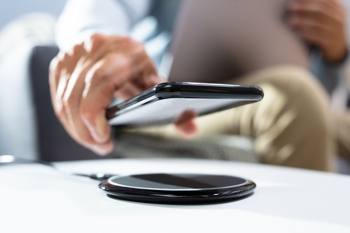 As we have already mentioned above, wireless charging has struggled in the past with competing standards. When we talk about “standards” we’re essentially talking about the form of technology that is used to transfer the power from the charger to the device. All of the brands we have covered above use the Qi standard, which is the standard that has been adopted by Apple, Samsung, and Google, but you should always check that your device is compatible with the charger.
As we have already mentioned above, wireless charging has struggled in the past with competing standards. When we talk about “standards” we’re essentially talking about the form of technology that is used to transfer the power from the charger to the device. All of the brands we have covered above use the Qi standard, which is the standard that has been adopted by Apple, Samsung, and Google, but you should always check that your device is compatible with the charger.
What’s more, Google have developed their own wireless technology that works in conjunction with Qi. This means that for its Google Pixel 3 phones, not every wireless charger is capable of delivering the same high-speed charging that it can to other phones. Again, these quirks of design are something that need to be considered when choosing your charger and doing the research is key. Thankfully, it looks like Google will move away from this with its Pixel 4, and hopefully we will soon be in an era when all wireless chargers are fully compatible with all phones.
Not every phone is currently capable of wireless charging, and at present, it seems to be limited to flagship phones from the major brands so do check that your phone can be charged wirelessly before making any purchase. That being said, you can purchase universal adapters that are ultra slim pads that are plugged into your phone via a flexible cable and sit inside your phone’s case, enabling wireless charging.
Charging Speed
Charging speed is another factor to consider when choosing your wireless charger. Wireless charging is certainly not capable of competing against wired charging when it comes to speed, but you can take steps to ensure you get the fastest wireless charge possible. Look at the output wattage when choosing your charger. They typically range from 5W to 15W, and the bigger the number, the faster the charge.
Design
A wireless charger is more intrusive than a cable plugged into a socket, so this is something you might want to consider when choosing your device. Many wireless chargers come in a variety of colours and styles, with some designed to blend into tables or to be a feature of some sort.
Chargers generally come as flat discs, or as docking stations that hold your phone up right. This latter design is better for those who want to still be able to use their phone whilst it’s charging.
Additional Features
As wireless chargers are still very much in their infancy, manufacturers have generally avoided adding additional features. Some can charge more than one device at a time, whilst others have LED lights that indicate their status.
One more factor to consider is how well the charger penetrates through a phone case. If you have a thick metal case you may find that your chosen charger cannot charge your phone when the case is on and removing the case each time can be inconvenient. Most chargers state in the product details the types of cases they are compatible with.






